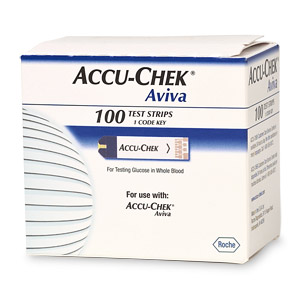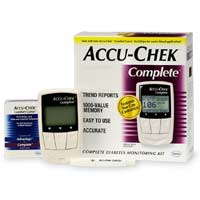Diabetes Care: OneTouch UltraSmart Blood Glucose Monitoring System
 OneTouch UltraSmart Blood Glucose Monitoring System Product Information
OneTouch UltraSmart Blood Glucose Monitoring System Product InformationSave up to $50. Mail-in rebate card inside box.
(Test strips sold separately)
Meter and Electronic Logbook in One.
- SmartButtons™ - Make your entries fast and easy.
- Patterns are easy to see and understand.
- Less pain, less blood, accurate results in 5 seconds.
- OneTouch® UltraSmart™ Blood Glucose Meter.
- OneTouch® Ultra Control Solution.
- OneTouch® UltraSoft™ Automatic Blood Sampler.
- 10 OneTouch® UltraSoft™ Lancets.
- Sporty Carrying Case.
- Owner's Booklet.
- Quick Reference Guide.
- Batteries Included.
- Enter logbook information at any time.
- Identifies out-of-range readings so you can add comments to your results.
- Glucose result, date and time.
- Insulin.
- Carbohydrates.
- Exercise.
- HbA1c
- Out-of-range glucose result.
- Fats/Proteins/Calories.
- Doctor Visit.
- Eye/Foot Exam.
- Weight/Height.
- Blood Pressure/Cholesterol.
- Push the FastFacts™ button.
- View charts and graphs.
- See information about trends.
- More choices for testing-arm* or fingertip.
- Exclusive FastDraw™ design test strip requires just a tiny drop of blood.
- A new computer program for people with diabetes.
- Organizes OneTouch® UltraSmart™ meter entries into simple charts and graphs.
- Helps you see trends and other factors affecting diabetes.
- Provides printable reports you can share with your doctor.
We are proud that you have placed trust in OneTouch®. As a leader in Diabetes Care, our goal is to support you in the management of your diabetes with the highest quality products and services.
3 - Year warranty.
30 - Day Money-Back Guarantee.
Directions:
See enclosed instructions.
For In Vitro Diagnostic use only. Store at temperatures under 86°F (30°C). Do not refrigerate.
*See Owner's Booklet for important information before testing on your arm.
Warnings:
Do not use if seal is broken or missing.
Customer Reviews of the OneTouch UltraSmart Blood Glucose Monitoring System
 | I had been using a Profile until Summer 2004, when I got the Ultra. The Ultra was great - small sample size and fast results - but held no info other than the test results and date/time. I'm no good at writing things down as they happen, so my recordkeeping was messed up. Just decided to go for the UltraSmart, and it's fantastic. It records all sorts of information, making it easy to see trends or to look back and see how much insulin I took and when. It was also very easy to set up despite all the buttons and the various options. The only thing I wish was different is the meal tags. With the Profile, you could tag any individual readings with any meal tag and the time didn't matter. For people like me with wacky schedules, forcing set time periods for each meal doesn't always work. -- Elizabeth, Bronx, NY on February 22, 2005 |
 | I am newly diagnosed with diabetes, and this meter really helps me see how I am doing with managing my blood sugar. I love how I can check trends by time of day, day of week, and add in food so I can tell how what I am eating affects my blood sugar. I love it! -- Anonymous on April 10, 2004 |
 | I can't believe how easy it is to test. The amount of blood needed is miniscule compared to what I have been using (One Touch Profile). I like the way it processes information in logbook form and is downloadable to a PC so you can get a clear picture of your trends, etc. This could be of value to your doctor as well. I am VERY happy with this meter and recommend it highly to anyone. Extremely easy to use! -- Dave, Indianapolis, IN on February 21, 2004 |
 | The very best in blood glucose monitors. Works with very small sample of blood. Negative: The FREE downloadable (via internet) software for this only works with DB9 connector, while most computers manufactured recently don't even have a DB9 serial port. Information CAN be manually entered into the program, however. -- Don, Hendersonvillte, TN on February 19, 2004 |
OneTouch UltraSmart Blood Glucose Monitoring System available at Drugstore.com.

























